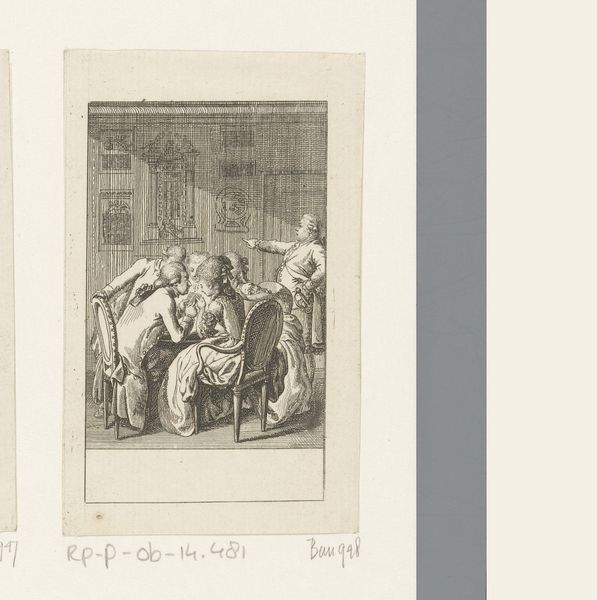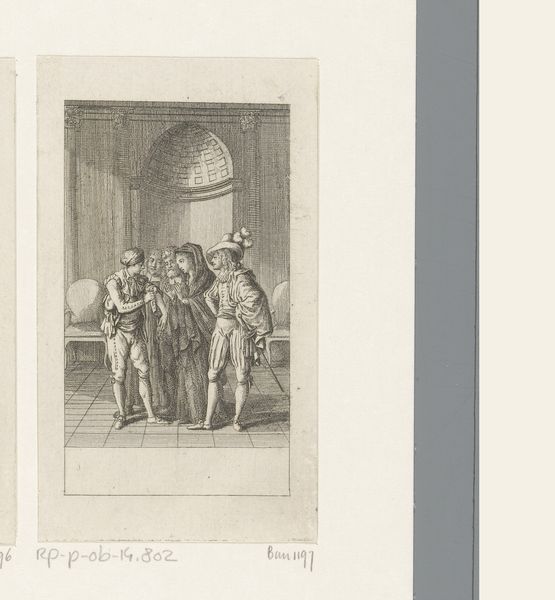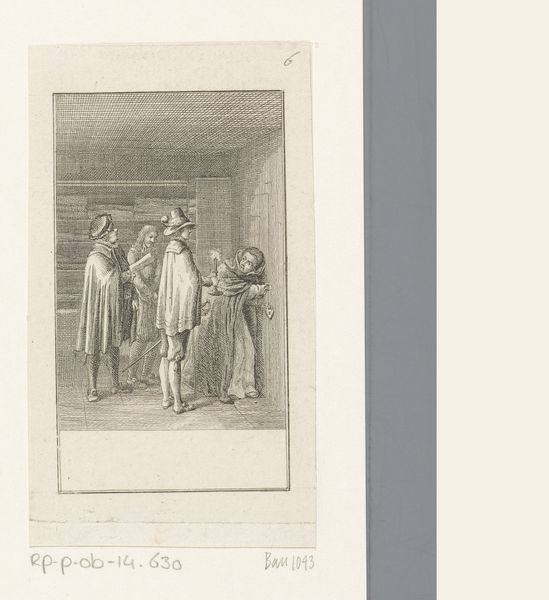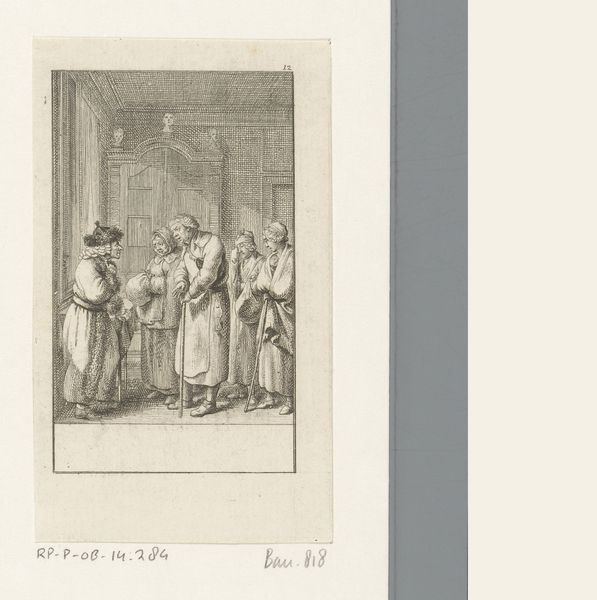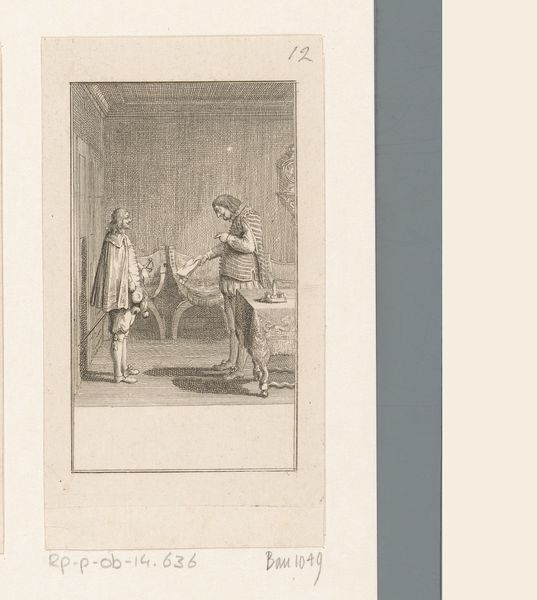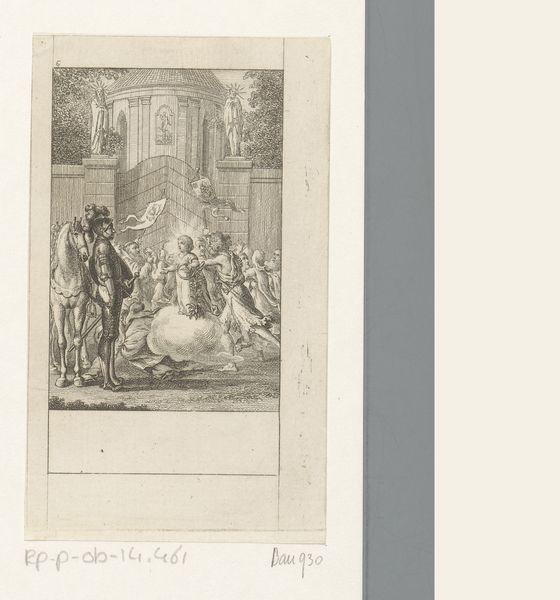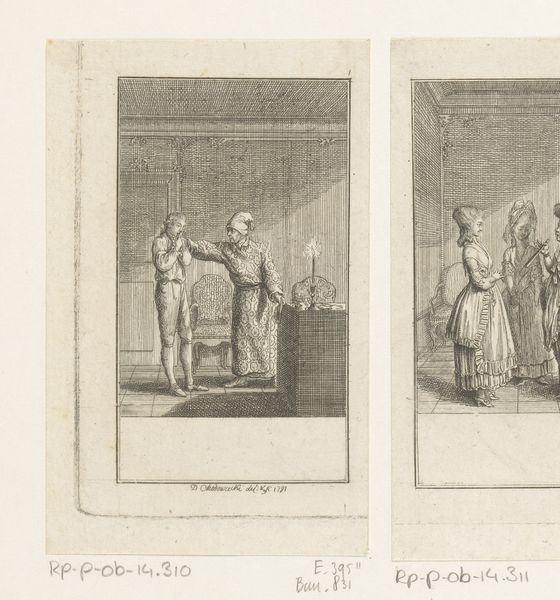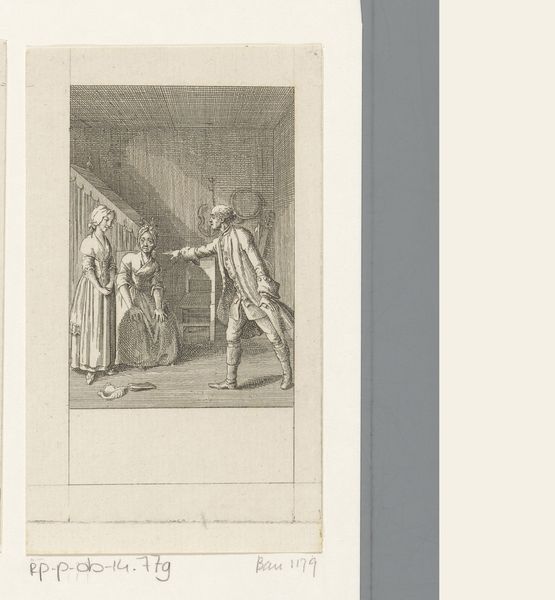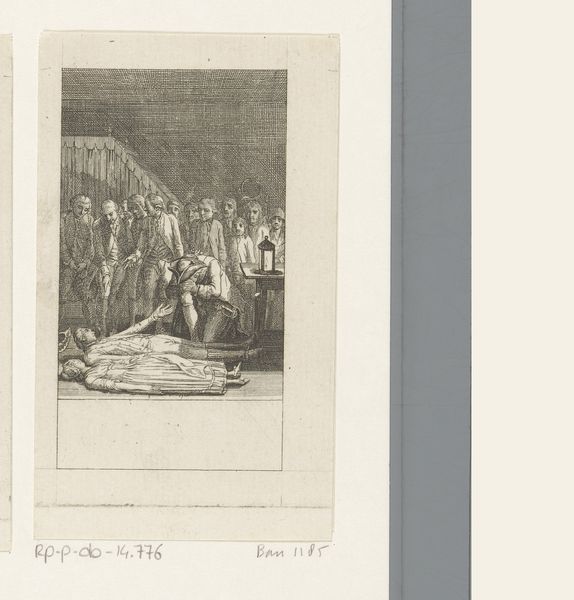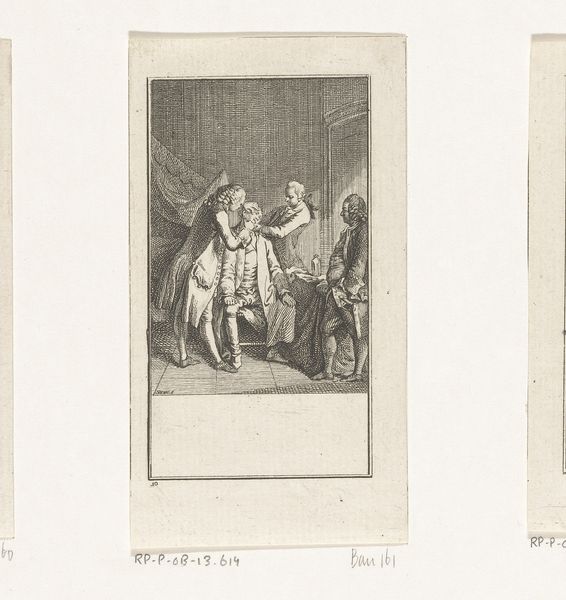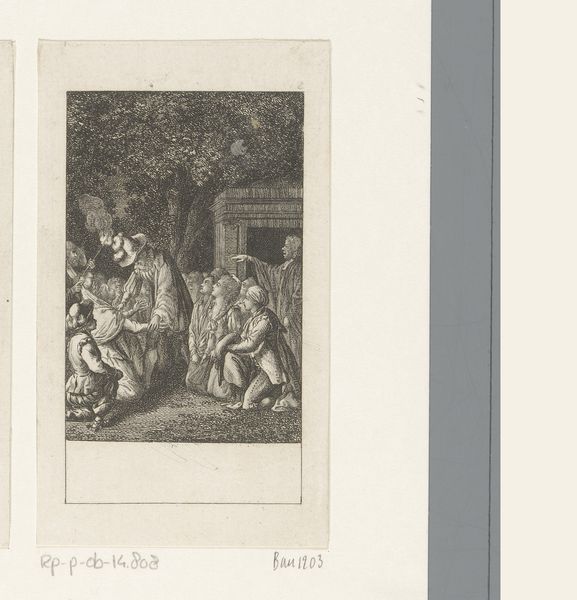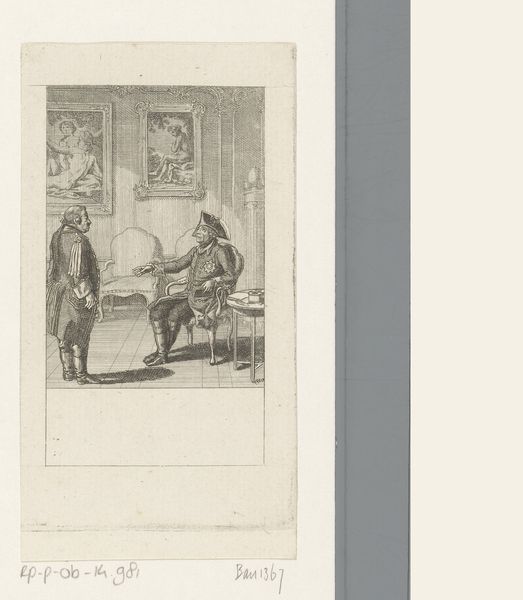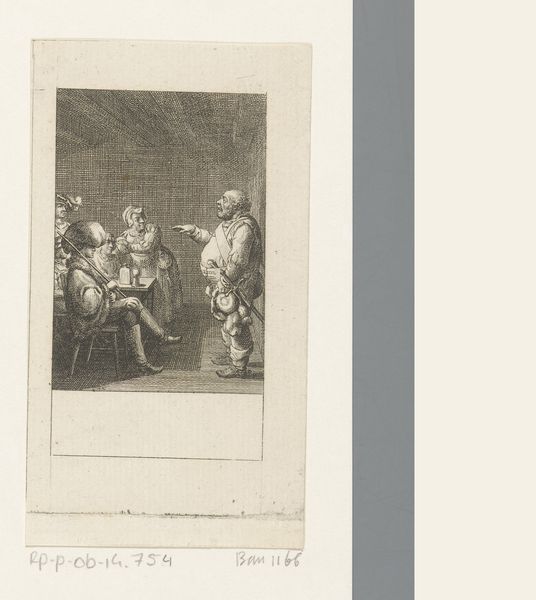
Walstein en Caroline bij Frederik de Grote in Potsdam 1786
0:00
0:00
drawing, print, engraving
#
portrait
#
drawing
#
neoclacissism
#
aged paper
#
light colour palette
#
pale palette
#
pastel soft colours
#
narrative-art
#
muted colour palette
#
pale colours
# print
#
light coloured
#
white palette
#
feminine colour palette
#
genre-painting
#
history-painting
#
soft colour palette
#
engraving
Dimensions: height 106 mm, width 68 mm
Copyright: Rijks Museum: Open Domain
Curator: This is "Walstein en Caroline bij Frederik de Grote in Potsdam," an engraving from 1786 by Daniel Nikolaus Chodowiecki, housed in the Rijksmuseum. The delicate lines give it an almost dreamlike quality. It depicts a meeting, but there’s a sense of formality that feels a little stiff. How do you interpret this scene? Editor: It feels like a carefully staged encounter, almost like political theatre. I mean, who are these people and why immortalize this? Curator: Precisely! This print provides insight into the performance of power in the late 18th century. Consider Frederick the Great. He was known for cultivating his image as an enlightened ruler, accessible yet still majestic. Chodowiecki's work circulated widely as illustrations for books and periodicals, therefore creating and reinforcing social and political norms. What elements of the composition draw your attention? Editor: The architectural setting seems significant, perhaps suggesting importance, and there's a bit of theater in the center. It reminds me of a stage with all those actors around it. And is that supposed to be an act of veneration when someone is bowing deeply and removing their hat in front of a coach? Curator: Absolutely, the architecture alludes to both classical antiquity and absolutist power, the artist stages it much like a classical play, and indeed, this act illustrates Frederick's careful dance between the aristocratic and common classes. These prints helped solidify not just his reign, but ideas around leadership itself. What do you take away from considering its role within that context? Editor: I see how this piece is as much about creating a historical narrative and a specific image of power as it is about portraying an actual event. It really highlights how art can shape our understanding of history, which now makes me more aware of these undercurrents of constructed power and historical perception that I see now when visiting an exhibit or reading art history. Curator: That's a wonderful observation. Examining art through its social and political context truly allows us to appreciate its significance.
Comments
No comments
Be the first to comment and join the conversation on the ultimate creative platform.
